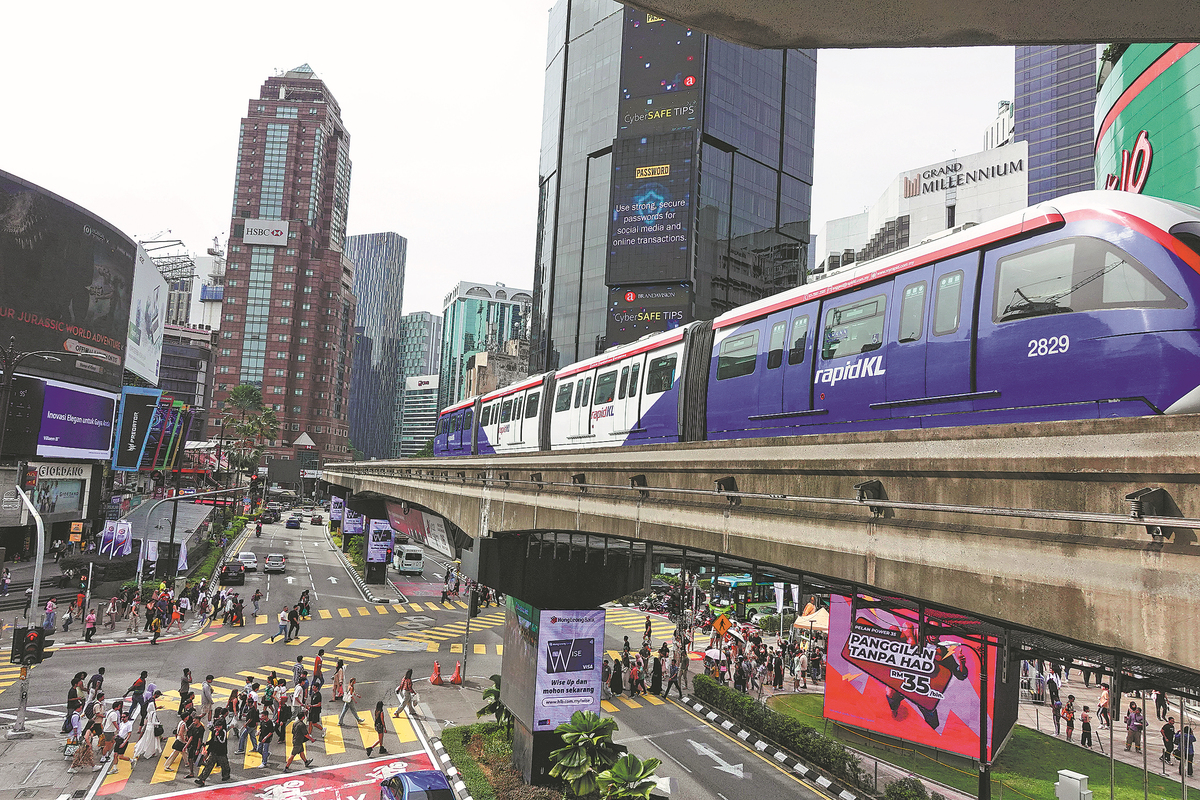Tariff turbulence propels ASEAN rethink
'One-sided' concessions, possible dumping raise concerns, experts say


'Lopsided' deals
Malaysia's experience is not unique among its Association of Southeast Asian Nations peers, in an export-dependent region that is among the hardest hit by the US tariffs.
Analysts see slower growth for most ASEAN countries in the coming months as tariffs boost consumer prices in the US and possibly discourage imports from ASEAN countries.
Like Malaysia, the Philippines, Indonesia and Thailand sent high-level delegations to negotiate with the Trump administration. They also agreed to concessions in exchange for tariff cuts, as well as additional imports from the US and allowing duty-free access of US goods into their domestic markets. Analysts viewed many of these deals as lopsided in favor of the US.
Amitendu Palit, a senior research fellow at the National University of Singapore's Institute of South Asian Studies, said each ASEAN country "has paid a fairly high price for entering into a deal with the US".
Despite committing to buy more US products and allowing more US businesses to access their markets, no ASEAN country managed to get "full access into the US market", he said. "They still continue to face tariffs. So it's not a very happy situation for (ASEAN) economies," Palit told China Daily.
Indonesia, Malaysia, Cambodia, the Philippines and Thailand were hit with 19 percent tariffs from Aug 7, while Vietnam was slugged with 20 percent. Brunei faces 25 percent, Laos and Myanmar both 40 percent, and Singapore 10 percent.
While these tariff rates are lower than what Trump initially announced in April, they are higher than the rates that were in place beforehand.
Kuala Lumpur-based Kenanga Investment Bank said in its Aug 4 research note that prior to the "reciprocal tariff shock", Malaysia enjoyed "very low" US tariffs. Some were even as low as zero on exports like semiconductors, electronics and pharmaceuticals.
The preferential rates were due to most-favored-nation status, which is in line with the rules of the World Trade Organization.
OCBC Bank in Singapore has estimated that the effective US tariffs imposed against ASEAN's six biggest economies — Indonesia, Malaysia, the Philippines, Singapore, Thailand and Vietnam — are significantly higher than the MFN rates.
Financial experts see higher rates as a drag on growth in a region that has long relied heavily on the US for export revenues. In a report issued on Sept 23, S&P Global Ratings said it expects "external forces" to pressure Asia-Pacific growth in the rest of 2025 and into 2026.
The report added that Asia-Pacific exports have held up so far in 2025 due in part to front-loading and strong demand for tech products.
However, the credit rating agency forecasts ASEAN GDP growth will ease by 0.4 percentage points from 2024 to 4.5 percent in 2025, with "below-trend growth" in 2026, as the impact of the US tariffs hits. Some of this impact will be mitigated by robust electronics demand and accommodative monetary policy.
In recent months, ASEAN member states' central banks have been cutting interest rates to support their economies amid the financial headwinds.
On July 9, Malaysia's BNM cut interest rates for the first time in nearly two years as "a pre-emptive measure aimed at preserving Malaysia's steady growth path".
In August, the Bank of Thailand and the Philippines' Bangko Sentral ng Pilipinas reduced their rates to three-year lows of 1.5 percent and 5 percent, respectively.
"In the near term, ASEAN countries are basically adopting a few counter-cyclical policies," said Lavanya Venkateswaran, OCBC's senior economist for ASEAN.
But over the long term, ASEAN economies with bigger export sectors — like Thailand, Malaysia and Vietnam — will need to diversify trading and investment partners and reduce reliance on the US, she added.
"Things are not what they used to be prior to President Trump's second term in the US. Each country will have to navigate these turbulent waters in the way it sees fit.
"So whether that means continued protectionism for certain industries, whether that means opening up your economies for certain sectors, all of that will have to be re-engaged under the new rules of the game," Venkateswaran told China Daily.
Erica Tay, Maybank's director of macro-research, said more domestically driven ASEAN economies, like the Philippines and Indonesia, will be less exposed to trade shocks. However, an economy's resilience against the impact of US tariffs will not depend on the size of its export sector alone, she added.
An economy's resilience hinges a great deal on how much fiscal firepower a country has, Tay told China Daily. She cited Singapore, which might be export-dependent, but is also the wealthiest member of ASEAN, as an example.
"Singapore is in quite a good place because it does have the fiscal resources to roll out some pump-priming projects to cushion economic growth during this very tumultuous period in the global trade landscape, whereas countries such as Thailand might not have much (fiscal) space," Tay said.
























